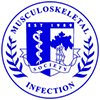Authors: Parvizi J, Azzam K, Soltys A, Purtill J, Valle CD, Barrack R
Title: Fungal Prosthetic Joint Infections: A Report of 10 Cases and Review of the Literature
Institution: Rothman Institute, Philadelphia, PA
Purpose: We evaluated a multi?institutional experience with fungal PJI with the intention of determining variables that influence outcome.
Methods: Ten patients treated for fungal PJI at three institutions were retrospectively reviewed. Medical records were studied in detail. Demographic, clinical, surgical and radiographic data were all extracted and analyzed. A thorough review of relevant literature was also performed along with study of basic microbiological information concerning fungal pathogens known to cause PJI. Relevant information pertaining to morphology, karyotypic and phenotypic characteristics, virulence factors, biofilm properties, diagnostic tests and mechanisms of action of antifungal therapies were extracted.
Results: C. albicans (6 patients), C. parapsilosis (2), Rhodotorula minuta (1) and Aureobasidium (1) were the main fungal pathogens. All patients were ultimately treated with a two?stage exchange arthroplasty with delayed reimplantation. Irrigation and debridement with prosthesis retention was NOT successful in our series. Amphotericin B and fluconazole were the main antifungal drugs utilized. All patients in the series had one or more risk factors for impaired immunity.
Discussion and Conclusion: Fungal prosthetic joint infections, although rare, can be successfully treated with prosthesis removal and antifungal therapy. Delayed reimplantation offers a good success rate that is comparable, if not better, to infection with antibiotic?sensitive bacteria. Attention, however, should be given to correction of immunity?impairing risk factors before reimplantation is undertaken.

